The Bantu knot is a natural hairstyle that has a deep cultural significance. Like cornrows and twists, it is both trendy and culturally significant.
In this article, we have discussed everything about Bantu knots, their history, and many more things. So, be with us to learn more about Bantu knots.
What are Bantu knots?
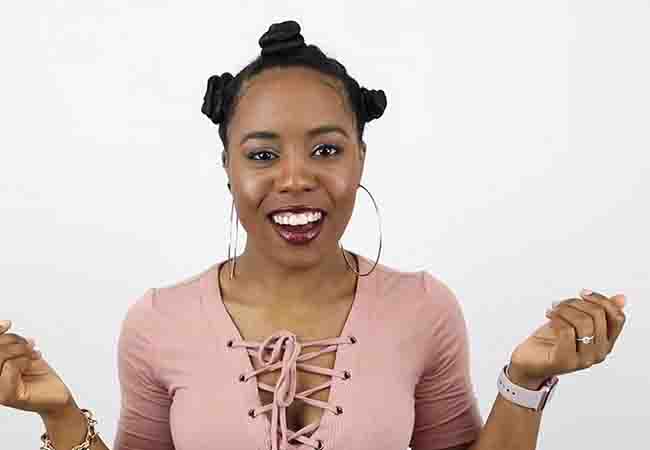
Bantu knot is a hairstyle in which people twist their hair and form a knot like a protective style.
Historically, Bantu knots have been very important. Basically Bantu means a language in which there are around 500 dialects of the Bantu language. People living in diverse parts of Central, Eastern, and Southern Africa speak Bantu.
African people have worn Bantu knots for over a century. It is a rocking hairstyle that you can try at any festival. It looks primarily similar to Nubian knots.
This hairstyle looks beautiful on short natural hair and can be easily rolled at the base of your hair. Recently, many celebrities have used this knot. For example, Rihanna, Scary Spice, and “Crazy Eyes” (Fictional character)
Origin of Bantu knots
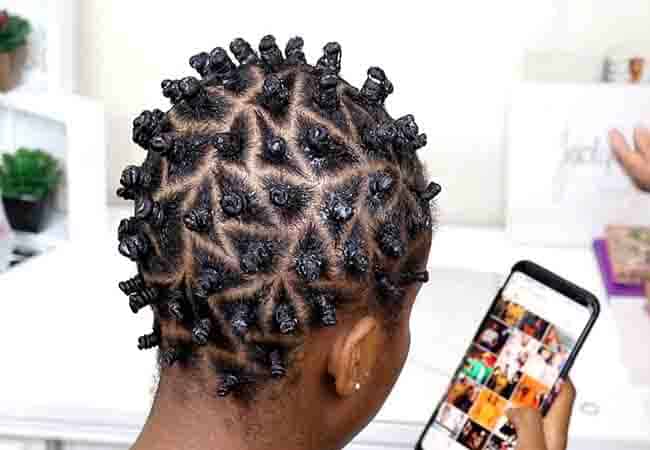
People think the Zulu people of southern and western Africa came up with traditional Bantu knots a few hundred years ago. They signify a great deal of pride and meaning in African culture. Zulu knots and du dubs are also called Bantu knots in other parts of Africa and the Diaspora.
Cultural Meaning of Bantu knots
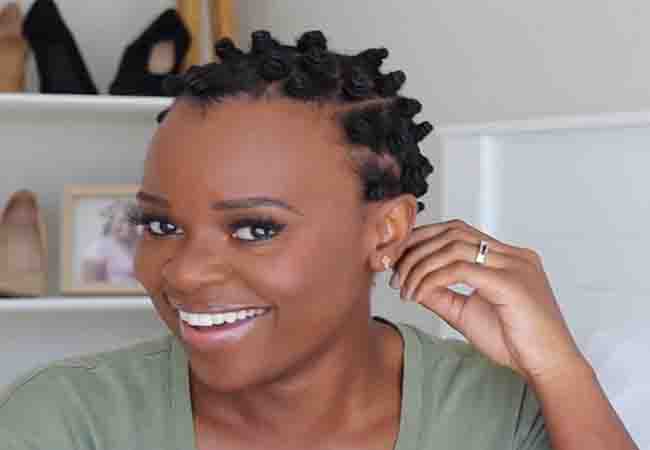
Bantu knots are an easy and familiar way to style hair, but they have come to mean something political in the West. They also symbolize black pride and self-love due to their deep African roots.
However, like many black historical forms, they are open to criticism, misinterpretation, and appropriation due to contemporary norms.
The Significance of Bantu Knots
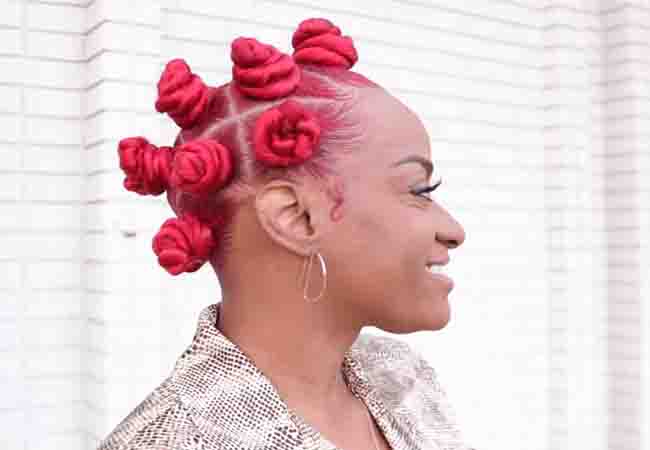
Seeing the hairstyles of white models and non-black celebrities have made it “trendy.” This diminishes the style’s significance. In 2016, the Italian fashion house Valentino put out a commercial showing predominantly white models’ haircuts.
The same year, Khloe Kardashian incorrectly tagged a photo of herself with Bantu knots as “Bantu babe.” The issue began last year after Adele posted an Instagram photo of herself wearing Bantu knots.
Are Bantu knots African?
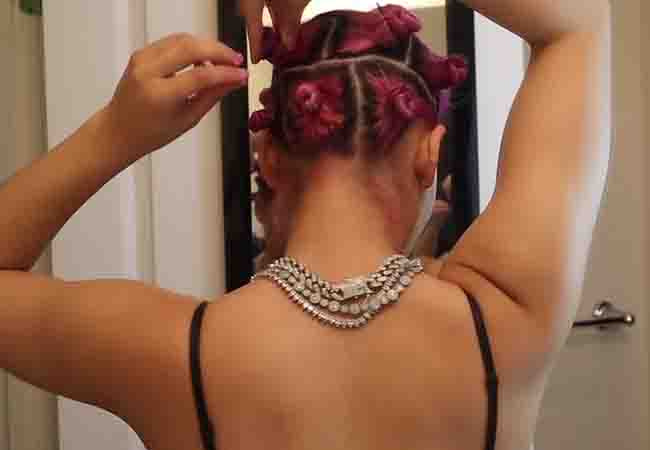
Bantu is the name of a language belonging to a tribe. It is also called Zulu Knots.
According to the South African History Organization, anywhere from 300 to 600 ethnic groups in southern Africa all speak the Bantu language. SAHO also reveals that over a hundred million people speak the Bantu language.
What do Jamaicans call Bantu knots?
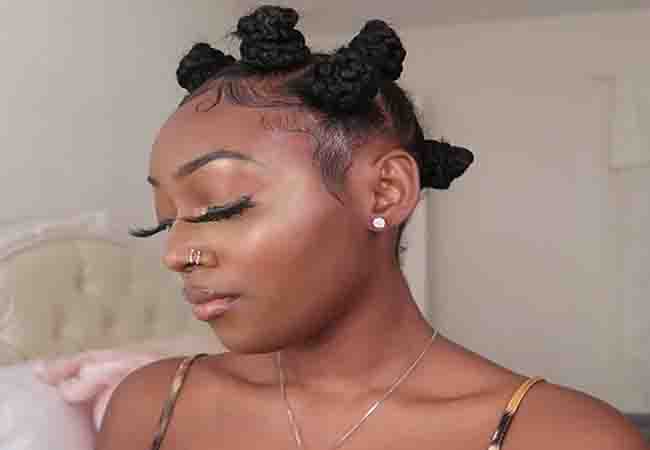
In Jamaica, they are known as Chiny bumps. Bantu knots and Nubian knots are both names for the tight hair coils traditionally worn by Black and African women.
The phrase “Nubian knot” referred to a minor style form and the term “Bantu knot” referred to a larger one. Because most Jamaican Chinese were short, the haircut became known as “Chiney Bumps.”
In addition, the Chiney Banana, a small kind of banana with a compact fruit, is native to Jamaica.
What does Bantu mean in Africa?
The Bantu people are a diverse group of Africans who live throughout a large swath of Southern and Central Africa. During the 1920s, liberal South African missionaries applied the term “Bantu” to the local population.
The National Party government used the term “Bantu” as the standard after WWII. It was in the middle of the nineteenth century that European colonialists changed the name of Africa’s Bantu people from the Abantu to the more modern Bantu.
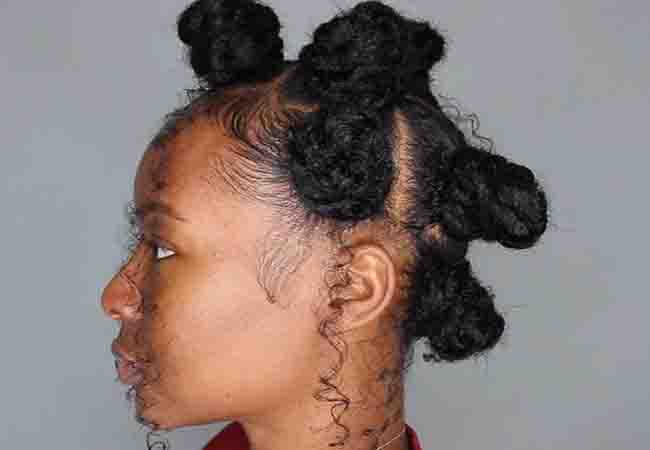
Over 2000 years ago, the Bantu people were among the 400 African ethnic groups who settled in what is now Cameroon.
During the 1600s, colonists found the first native Bantu speakers. The Zimbabwean Shona people are a great example of this. To this day, much is unknown about Great Zimbabwe.
It was the Dutch conquerors that used the name “Bantu” in a disparaging sense, but it was the South Africans who spread the actual meaning of the word. To this day, southern Africa is home to many Bantu-speaking tribes.
History of Bantu Knots
i)Where did Bantu knots come from?
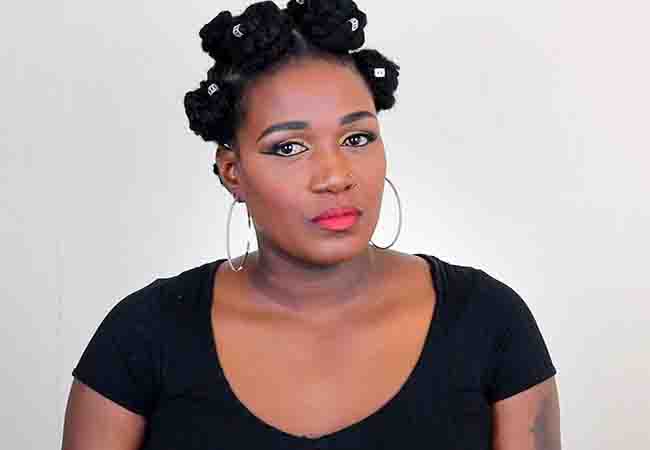
Nobody knows how the Bantu languages spread to southern Africa, but they erected some impressive fortifications once there. A wide variety of people have lived there over the years.
According to certain studies, it probably originated in Madagascar. But most people recognize that South African Zulu people created the Bantu knot.
The horrific Slave Trade involved capturing and forcing Bantu people onto ships. They were sold into bondage in the Caribbean and Europe, as well as in the United States.
ii )Who wore Bantu knots first?
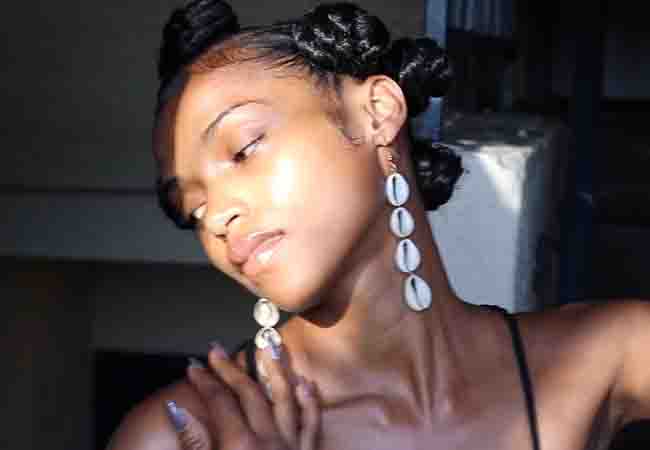
Imagery of women in Madagascar sporting the Bantu Knots hairstyle dates back to 1898. South Africa is home to several different ethnic groups, known collectively as the Bantu knot or Zulu knot.
Many authors have mentioned that married women used to have Bantu knots to show their marital status. Also, the Buddhist founder, Goutam Buddha, was found to have this knot.
iii )How did Bantu Knots Become Modern & Popular?
African women have worn this hairstyle since the beginning of civilization. Although they’ve been worn through the 20th and 21st centuries, they gained significant popularity among African-Americans in the 1990s.
Bantu Knots, also known as “twisted little hair buns,” first became popular in the United States in the early 2000s. The use of Bantu Knots has gained immense popularity all around the world.
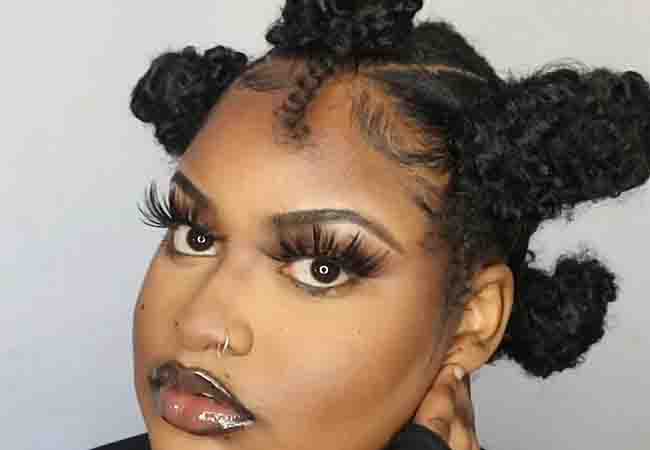
Everyone loves it, from the runways of the most expensive fashion houses to Jada Pinkett Smith’s character in “The Matrix.”
And now, many years later, it’s still rocking the same great look. Bantu knots are an excellent form of head protection. Undeniably, this look has also caught on with the rest of the fashion set. White models have donned it in various recent fashion shows and editorials.
This traditional aesthetic has not been recognized (as well as others). This is a massive insult to black men and women, who already have to deal with European beauty standards.
iv) Can anyone wear Bantu knots?
Making a Bantu Knot is a lot less complicated than you would assume. You can create as many or as few knots as you choose by dividing your hair into sections and twisting them.
No extensions are required. You can use these techniques on either short or long hair. The Bantu knot-out has become a staple for many people with natural hair who want to avoid using heat tools.
It is versatile and can be worn by women of all hair types and lengths.
Why should you use Bantu knots?
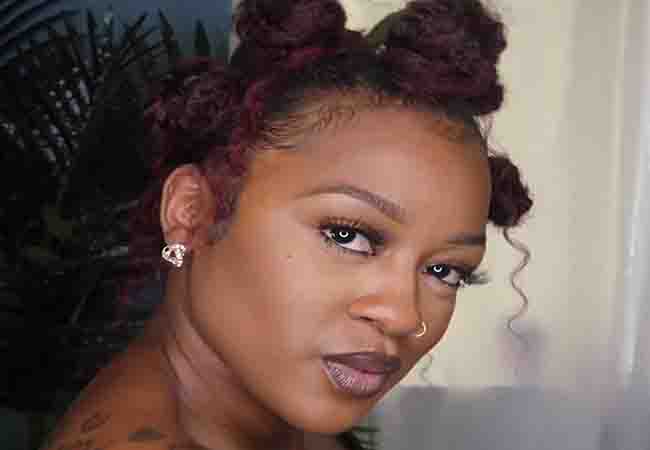
Bantu knots are an easy summer hairstyle that anyone in their own house can do. It’s perfect for preventing heat damage and easing the adjustment to shorter hair. If properly maintained, they can last for two weeks, but too long can damage your roots.
With straight hair, you can add length, ease styling, reduce frizz, and make a striking contrast, whether you wear it down, up, or in a ponytail.
Bantu Knots and Its Cultural Appropriation
The Afro-puff is a classic style for non-white women everywhere, especially those who like to wear their hair in its natural state, and it has survived numerous iterations since its beginnings.
Certain ethnic groups of African women take great pride in donning them. As such, they serve as a crucial indicator that women in society value maintaining long-standing hair customs.
Amazingly, we have managed to keep this tradition and aesthetic alive in our communities and families, despite the fact that many African-Americans are oblivious of their ancestry in Africa.
The hairstyle has been adopted by white celebrities and called “twisted micro buns” after being appropriated by predominantly white models, as is all too usual in the fashion business with Black culture.
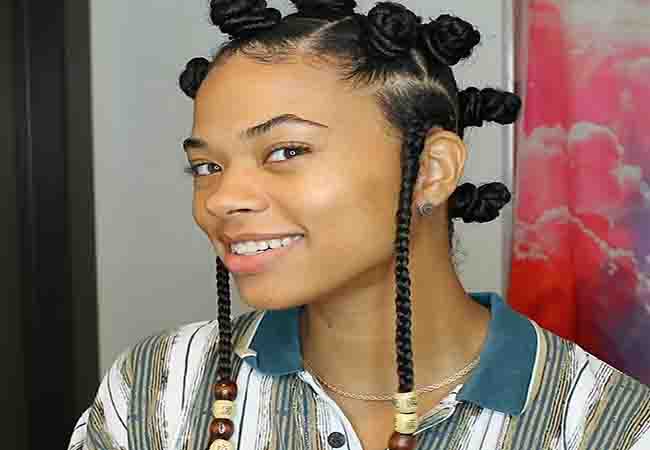
Fashion magazines have hailed these non-Black personalities as the inspiration for the style or trend. Bjork widely popularized Bantu Knots in the ’90s, and many still give her credit for this.
The entire fashion industry rests on the theft and misuse of cultural components from other cultures, which are then falsely credited to the fashion industry.
Recent years have seen a rise in the popularity of black celebrities like Mel B. and Jada Pinkett-Smith. White models’ statements that they created the look and that it is part of their culture are deeply offensive to black people.
Simply put, they have historically rebelled against European cultural norms on aesthetics.
Khloe Kardashian, an American media icon, became famous in 2016 for wearing her blonde hair in the traditional African style of Bantu Knots.
He decided to delete the racist photo after receiving countless nasty tweets from black Twitter users. Bantu knots have been criticized by Khloe Kardashian and Valentino.
Can you wear Bantu knots even being white?
In my opinion, one should avoid appropriating someone else’s cultural practices before being deeply familiar with their significance, before understanding their historical significance.
If you’re not Black and you don’t get the hairstyle, it’s better to just ignore it and compliment the women that wear it.
Is it terrible to wear your hair in Bantu knots?
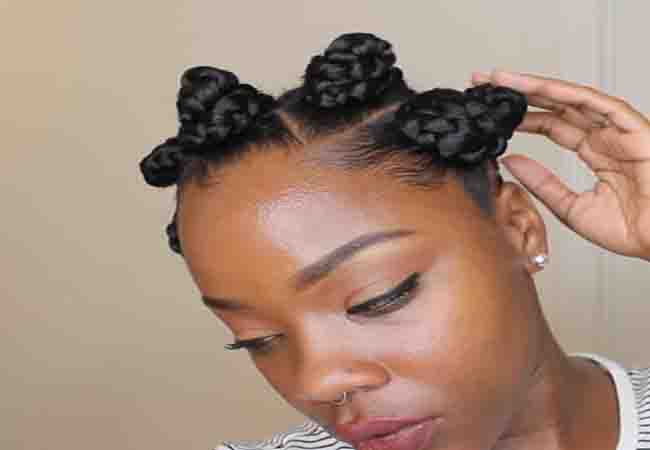
Bantu and Zulu ‘knots’ are hairstyles that, if done correctly, protect your hair and keep it in place. Too tight a twist could damage your hair.
Be sure to twist each segment of hair before moving on to the next. Remove the knots and give your headrest for a few days if they put much pressure on your scalp.
FAQs
1. How long can you wear Bantu knots?
If you want to have a Bantu knot out at some point, you can leave them in for as long as five days. How long this takes depends on how long your hair typically takes to produce defined curls.
2. Do you know how to sleep in a Bantu knot?
A few little changes will give you a decent night’s sleep while wearing a Bantu knot.
3. Do Bantu knots better on damp or dry hair?
Dry or straightened hair is ideal for Bantu knots. Try to put Bantu knots on wet hair only if you want less-than-ideal results and a more challenging styling process.
Own Verdict
Repeating the same style over and over might become monotonous. Why not try a new, exciting hairstyle and use hair care products that help restore moisture and strengthen hair strands simultaneously?
I think it’s essential for you to be able to get the looks you want without compromising your hair’s health.

